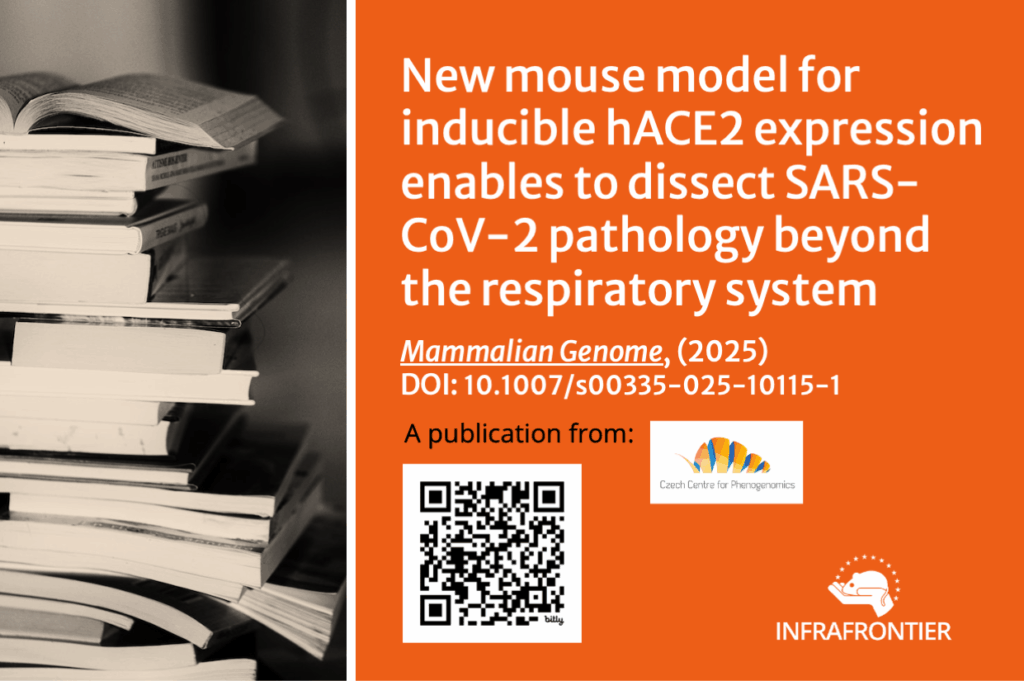New Mouse Model for Inducible hACE2 Expression Enables to Dissect SARS-CoV-2 Pathology Beyond the Respiratory System
Our colleagues at Czech Center for Phenogenomics have developed a new mouse model to better study the systemic effects of SARS-CoV-2 infection: “New mouse model for inducible hACE2 expression enables to dissect SARS-CoV-2 pathology beyond the respiratory system.”
Abstract:
The Severe Acute Respiratory Syndrome Coronavirus-2 (SARS-CoV-2) infection is not limited to the respiratory tract as receptors, including the angiotensin-converting enzyme 2 (ACE2), are expressed across many tissues. This study employed a new conditional mouse model, Rosa26creERT2/chACE2, which expresses human ACE2 (hACE2) across multiple organs, to investigate the effects of SARS-CoV-2 infection beyond the respiratory system. This strain demonstrated susceptibility to SARS-CoV-2 infection in a dose and sex-dependent manner, showing that infected male mice exhibited more severe disease outcomes, including significant weight loss, pronounced lung pathology and dysfunction, and increased mortality, compared to females. In contrast to intratracheal infection, intranasal virus administration facilitated viral spread to the brain, thereby underscoring the nasal route’s role in the pathogenesis of neurological manifestations. Intranasal infection also led to increased innate immune system activation as compared to intratracheal virus administration, even though both routes activated the adaptive immune response. This model provides a valuable tool to study SARS-CoV-2 in individual tissues or use a multisystemic approach, and it also advances possibilities for preclinical evaluation of antiviral therapies and vaccine strategies.
Original publication:
Gambini F, Arbon D, Nickl P et al. mouse model for inducible hACE2 expression enables to dissect SARS-CoV-2 pathology beyond the respiratory system. Mammalian Genome (2025). DOI: 10.1007/s00335-025-10115-1
